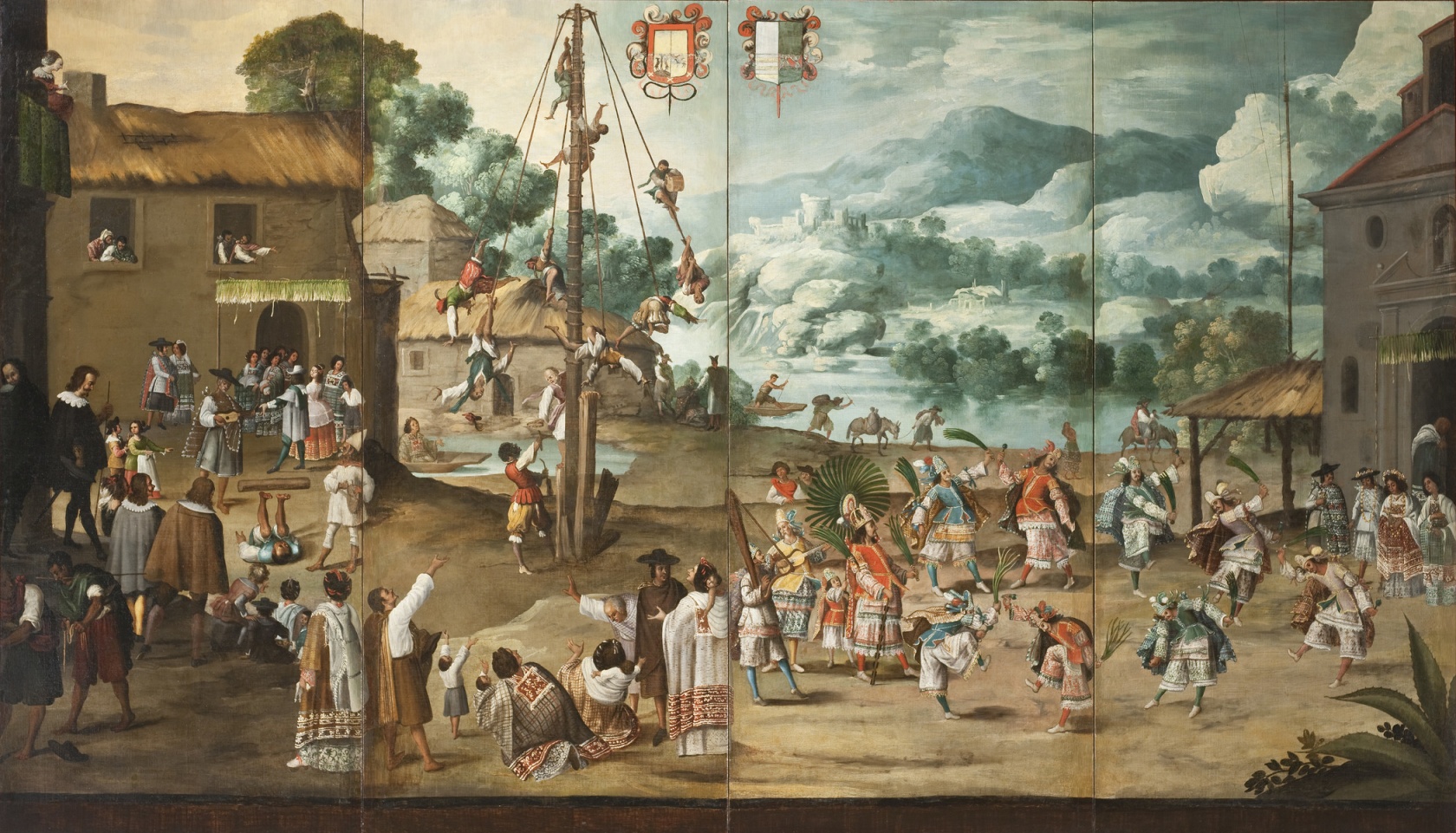Folding Screen with Indian Wedding and Flying Pole (Biombo con desposorio indígena y palo volador)

A century before the fad for chinoiserie and japonism captivated Europe, luxury commodities from China, Japan, and India made their way to the Americas via the famous Manila galleons, which made annual trips from Manila to the port of Acapulco in New Spain from 1565 to 1815. The ships were filled with “exotic” objects, including exquisite lacquer, ivories, textiles, porcelain, and furniture, as well as natural products such as spices and tea. Many of these items were distributed to local merchants in Mexico City; others continued southward to the viceroyalty of Peru to satisfy a growing clientele.
At the beginning of the seventeenth century, Japan and New Spain attempted to formalize trade relations, but the effort was thwarted following the unification of Japan. By the second half of the seventeenth century, the importation of Japanese goods to the viceroyalties had decreased. The demand for Asian objects inspired colonial artists and craftsmen to adapt and reinterpret Asian materials, formats, and techniques, including ceramics, lacquerwork, textiles, folding screens, and objects inlaid with mother-of-pearl.
This folding screen (Sp. biombo) depicts an Indian celebration in a village, probably Santa Anita Ixtacalco, a famous destination in the environs of Mexico City.